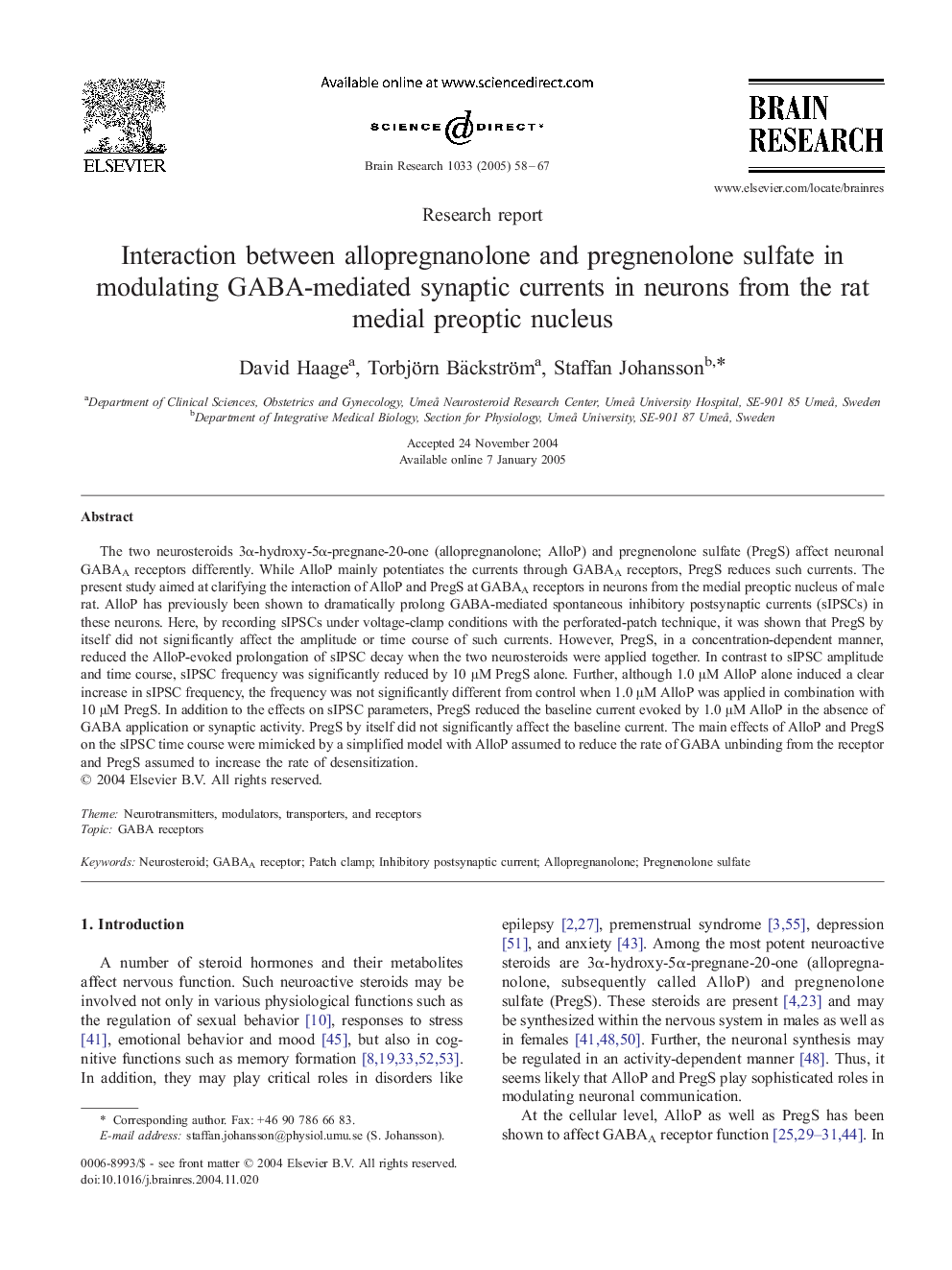| Article ID | Journal | Published Year | Pages | File Type |
|---|---|---|---|---|
| 9416755 | Brain Research | 2005 | 10 Pages |
Abstract
The two neurosteroids 3α-hydroxy-5α-pregnane-20-one (allopregnanolone; AlloP) and pregnenolone sulfate (PregS) affect neuronal GABAA receptors differently. While AlloP mainly potentiates the currents through GABAA receptors, PregS reduces such currents. The present study aimed at clarifying the interaction of AlloP and PregS at GABAA receptors in neurons from the medial preoptic nucleus of male rat. AlloP has previously been shown to dramatically prolong GABA-mediated spontaneous inhibitory postsynaptic currents (sIPSCs) in these neurons. Here, by recording sIPSCs under voltage-clamp conditions with the perforated-patch technique, it was shown that PregS by itself did not significantly affect the amplitude or time course of such currents. However, PregS, in a concentration-dependent manner, reduced the AlloP-evoked prolongation of sIPSC decay when the two neurosteroids were applied together. In contrast to sIPSC amplitude and time course, sIPSC frequency was significantly reduced by 10 μM PregS alone. Further, although 1.0 μM AlloP alone induced a clear increase in sIPSC frequency, the frequency was not significantly different from control when 1.0 μM AlloP was applied in combination with 10 μM PregS. In addition to the effects on sIPSC parameters, PregS reduced the baseline current evoked by 1.0 μM AlloP in the absence of GABA application or synaptic activity. PregS by itself did not significantly affect the baseline current. The main effects of AlloP and PregS on the sIPSC time course were mimicked by a simplified model with AlloP assumed to reduce the rate of GABA unbinding from the receptor and PregS assumed to increase the rate of desensitization.
Keywords
Related Topics
Life Sciences
Neuroscience
Neuroscience (General)
Authors
David Haage, Torbjörn Bäckström, Staffan Johansson,
